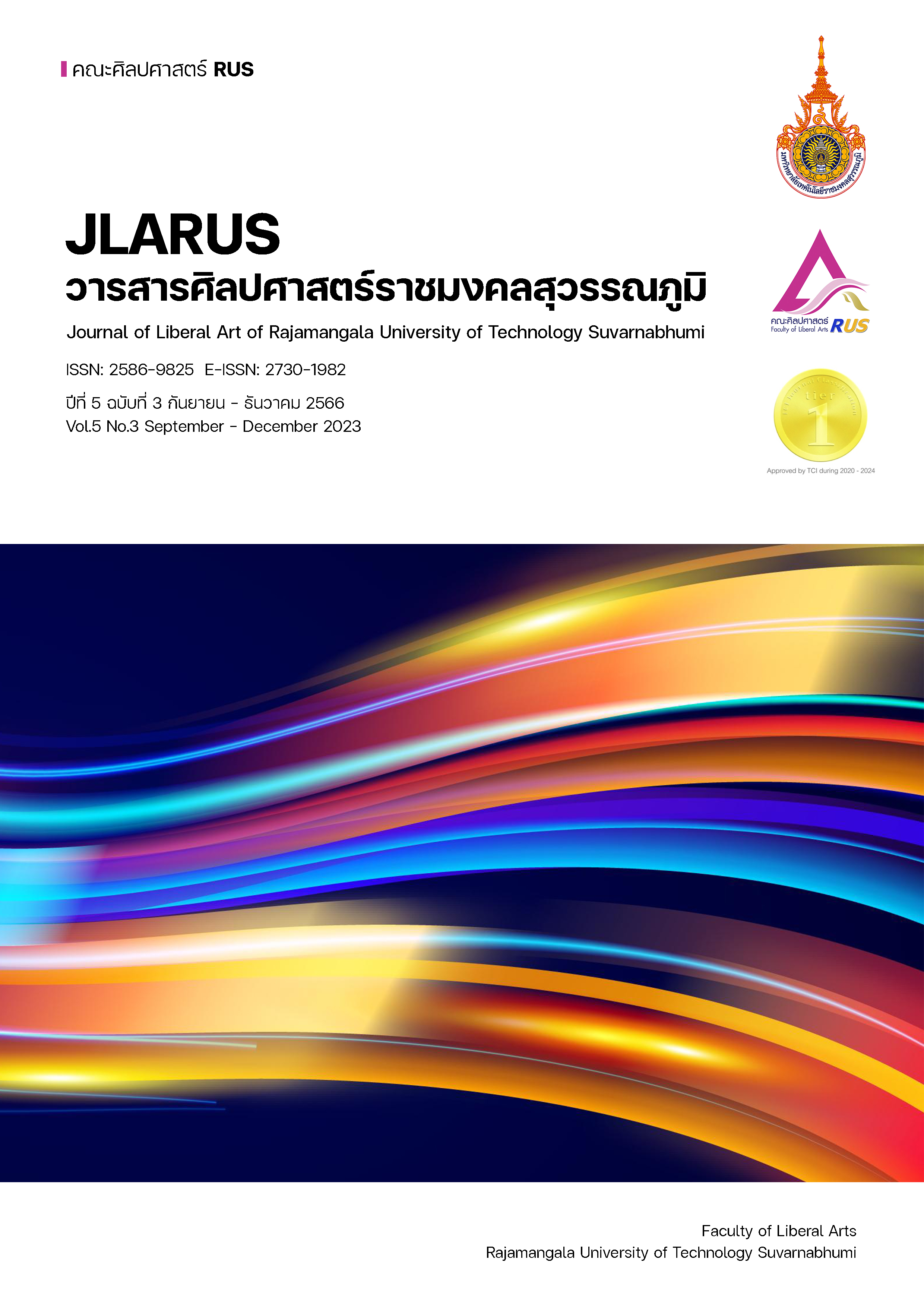THE FUTURE TREND OF BUBBLE MILK TEA IN BANGKOK AFTER COVID 19 PANDEMIC: APPLYING THE THEORY OF PLANNED BEHAVIOR
Main Article Content
Abstract
Bubble milk tea is a famous drink from Taiwan since 1980 and became famous in Thailand in 2001. This kind of beverage is rapidly very popular among Thai customers who love sweet drinks, especially the pearl beads that are added to the bubble milk tea help to please the customers to enjoy the bubble milk tea. Bubble milk tea is one of the promising business and still keep growing in Thailand and other countries. This research applied and planned behavior theory to study the customer purchasing behavior of bubble milk tea in Bangkok, Thailand after the spreading of the COVID-19 pandemic. The sample size is the bubble milk tea customers in Bangkok with the age between less than 20 years old and more than 50 years old. The purposive sampling method was applied to screen and choose the respondents. In a total of 546 bubble milk tea customers responded to the questionnaire in both an online survey and paper questionnaire. The SEM (Structural Equation Modeling) with the help of the AMOS program was used to analyze the data and path analysis. The result shows that attitude, subjective norm and perceived behavior control are 3 main factors that have strongly effect and influence on the purchasing intention of the bubble milk tea in Bangkok. While purchasing intention has the strongly effect to mediate the relationship between theses 3 factors (attitude, subjective norm and perceived behavior control) with the purchasing behavior. This research suggested the business owner to focus on the effort of increasing the positive attitude and perceived behavior control to their customers because there are the significant factors that increase the intention to purchase which lead to the purchasing behavior of their customers.
Article Details

This work is licensed under a Creative Commons Attribution-NonCommercial-NoDerivatives 4.0 International License.
References
Ajzen, I. (2002). Perceived behavioral control, self‐efficacy, locus of control, and the theory of planned behavior 1. Journal of applied social psychology, 32(4), 665-683.
Ajzen, I. (2020). The theory of planned behavior: frequently asked questions. Human Behavior and Emerging Technologies, 2(4), 314-324.
Alam, S. S., Jani, M. F. M., Omar, N. A., Hossain, T., & Ahsan, N. (2012). Empirical study of theory of reason action (TRA) model for ICT adoption among the Malay based SMEs in Malaysia. Business Management and Strategy, 3(2), 43.
Amaro, S., & Duarte, P. (2015). An integrative model of consumers' intentions to purchase travel online. Tourism management, 46, 64-79.
Astuti, B., & Putri, A. P. (2018). Analysis on the Effect of Instagram Use on Consumer Purchase Intensity. Review of Integrative Business and Economics Research, 7, 24- 38.
Dewanto, K. N., & Belgiawan, P. F. (2020). The influence of social norms and attitude in sustainable fashion product purchase behaviour. Am. Int. J. Bus. Manag, 3, 64-75.
Humaira, A., & Hudrasyah, H. (2016). Factors influencing the intention to purchase and actual purchase behavior of organic food. Journal of Business and Management, 5(4), 581-596.
Kiew Jiet Ping, M., Evelyn Toh Ting Ling, M., & Michelle Eu Hui Sing, M. (2021). Milk Tea Purchasing Behaviour among the Youth: A Study in Sibu Town. Borneo Journal of Social Sciences & Humanities, 54-68.
Koay, K. Y., & Cheah, C. W. (2023). Understanding consumers' intention to revisit bubble tea stores: an application of the theory of planned behaviour. British Food Journal, 125(3), 994-1007.
Kotler, P. & Armstrong, G. (2014). Consumer market. In Principles of Marketing by Kotler, W., et al., pp. 251-296.
Leong, C. M., Loi, A. M. W., & Woon, S. (2021). The influence of social media eWOM information on purchase intention. Journal of Marketing Analytics, 1-13.
Norfarah, N., Koo, P. M., & Siti-Nabiha, A. K. (2018). Private Label Brand Purchase Intention: A Malaysian Study. Global Business & Management Research, 10.
Peña-García, N., Gil-Saura, I., Rodríguez-Orejuela, A., & Siqueira-Junior, J. R. (2020). Purchase intention and purchase behavior online: A cross-cultural approach. Heliyon, 6(6).
Phan, T. A. & Mai, P. H. (2016). Determinants Impacting Consumers’ Purchase Intention: The Case of Fast Food in Vietnam. International Journal of Marketing Studies, 8(5), 56-68.
Trafimow, D., Sheeran, P., Conner, M., & Finlay, K. A. (2002). Evidence that perceived behavioural control is a multidimensional construct: Perceived control and perceived difficulty. British journal of social psychology, 41(1), 101-121.
Wen, B. L. J., & Aun, N. B. (2020). Factors influencing consumers’ purchase intention in Klang Valley, Malaysia: A study of bubble milk tea. BERJAYA J. Serv. Manag, 13, 29-43.
Yakup, D., & Jablonsk, S. (2012). Integrated approach to factors affecting consumers purchase behavior in Poland and an empirical study. Lars, 16, 5.
Yau, H. K., & Ho, T. C. (2015). The influence of subjective norm on behavioral intention in using e-learning: An empirical study in Hong Kong higher education. In Proceedings of the International MultiConference of Engineers and Computer Scientists, 2, 18-20.


